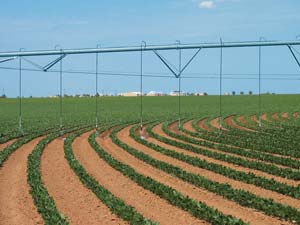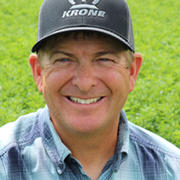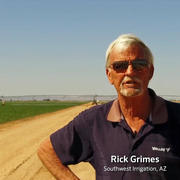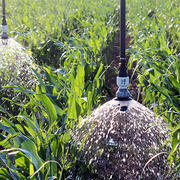
LEPA (Low Energy Precise Application) irrigation was developed in the early 1980’s to meet the needs of the declining aquifer levels in the western high plains of the United States. It is a water-efficient irrigation practice featuring low-pressure LEPA bubblers. The bubblers use less energy than conventional low-pressure sprinklers and can operate using fewer gallons per minute.
LEPA systems gently deliver water just 8 to 18 inches above the ground to combat wind-drift and prevent evaporation loss. Researchers and growers have found that at least 20% more water reaches the soil compared to conventional spray nozzles. The applicators also operate at low pressures ranging from 6 to 20 psi. They use less energy than conventional low-pressure sprinklers and operate using fewer gallons per minute than conventional spray nozzles - approximately 0.27 to 21.18 gpm.
How It Works
In older LEPA systems, applicators are positioned to deposit water into every other furrow. This requires planting in circles for center pivots and straight rows for linear machines. Heat accumulates in the dry areas and keeps the plant warmer. The plants share the water in the furrow in between. This keeps the crop canopy dry and prevents possible damage from salt in the water.
In recent years, growers have adopted a Close Spacing method and are placing applicators on every row to wet the entire soil surface. This method distributes water over most of the soil surface with 40 inches or less between heads. Conservation tillage practices further help prevent evaporation loss, and run-off by holding the water in the rows until the soil can absorb it. As a result, the LEPA Close Spacing method achieves application efficiencies typically exceeding 95%.
The Results
LEPA maximizes the effectiveness of water usage and helps growers:
- Prevent wind-drift losses
- Minimize evaporation loss
- Avoid wetting plant canopy in row crops
- Achieve a more uniform root zone coverage
- Can increase yield using less water
- Low-pressure systems can reduce pumping costs
- Ideal for both high and low profile crops
- Apply water needed in fewer pivot passes
- Qualifies for government funding in select areas
- Reduce potential rodent damage to crop and equipment over drip systems
Considerations
For optimum results, fields with LEPA systems should incorporate:
- Tight spacing - 40 inches or less between applicators
- Sprinkler height - 8 to 18 inches above the ground
- Conservation tillage - recommended to increase surface storage capacity and improve filtration
- Level fields - ideal maximum slope is 1%
- Filtering - smaller nozzles are prone to plugging
- Soil moisture monitoring - recommended to help reduce deep percolation losses
We introduced our Quad Spray in 1986 specifically for LEPA irrigation. Today, there are two types of bubble heads available: one deposits water straight down into furrows and distributes water in a narrow stream that avoids wetting the foliage; the other deflects water down in a wide, dome-shaped pattern that gently distributes water without spraying.





